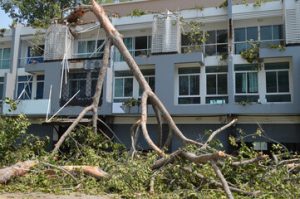Disaster cleanup services offer a range of emergency restoration solutions. They prioritize safety standards, protecting occupants and workers. They also help prevent further damage to structures, saving owners and businesses more money in repairs.
They also know how to document the damage for insurance policies. This will ensure you get a fair share of compensation. Read on or click here at https://www.allproutah.com/ to learn more.

Damage Assessment
Damage assessments provide a clear picture of the impact of an event. They can help determine the best course of action for restoring safety and order after emergencies. They also help to make insurance claims, if needed.
Damage assessment teams are deployed at the individual, community, and state levels to examine public infrastructure and private property damaged by disasters. They collect information that will help determine whether a county has met federal thresholds for aid eligibility. The data helps to determine what types of repairs are needed and which areas should be prioritized for disaster clean-up and recovery efforts.
The RNA is an initial, rapid inspection of public and lifeline infrastructure that may have been affected by the disaster, including but not limited to roads, bridges, water systems, and government buildings. The IDA is a more detailed inspection of private property, including primary residences and businesses. This inspection captures more accurate dollar estimates and is used to determine if the area meets FEMA criteria for a Disaster Declaration.
During the initial damage assessment process, you should be sure to have your assigned location and time prepared to report to the Emergency Operations Center (EOC). Be ready to go with paper, computer, pens/pencils, issue supplies, and any equipment you may have been issued. When your assignment is complete, contact the Damage Assessment Officer and inform them that you have completed your initial damage assessment.
Debris Removal
The aftermath of a natural disaster often leaves behind large amounts of debris that can be a safety hazard. Sharp objects, downed power lines, and other hazards can cause serious injuries if not removed immediately. Furthermore, cluttered debris can block roads and prevent emergency services from accessing affected areas. Involving residents in the debris removal process is a crucial step for communities to restore order and help individuals overcome emotional distress.
The need to return to normalcy after disasters can push authorities and community members to prioritize quick fixes in cleanup efforts. However, this can have long-term consequences. In one example, a city that prioritized clearing streets without conducting environmental checks ended up with toxic waste contaminating water supplies for years to come.
Investing time in planning and assessment helps communities to deploy resources efficiently, reducing the risk of returning to the scene for additional cleanup. In addition, engaging residents is a powerful way to build trust and promote collaboration. Educating people about the recovery process can also reduce frustration and enhance morale. Simple workshops and community meetings can address common questions, clarify priorities, and highlight safety concerns. As an added benefit, it also gives residents a sense of ownership and responsibility, allowing them to help speed up the restoration process.
Cleaning and Sanitization
Disaster cleanup specialists work with homeowners, insurance companies, and businesses to restore the property to its pre-disaster state. They offer quick response, accurate estimates, and quality work. They also understand how to handle the delicate task of saving as much as possible while maintaining safety and security.
Flood, fire, and mold outbreaks can cause significant damage to your property and its contents. The first step of the restoration process is to remove all debris, dry the structure, and restore its structural integrity. After that, cleaning and sanitization are essential to get rid of any latent disaster traces or contaminants and ensure that the building is safe for occupants.
Raw sewage spills pose serious health hazards and must be thoroughly cleaned, disinfected, and deodorized to prevent illness and disease. A disaster cleanup company can safely pump out the contaminated water and waste, scrub and disinfect surfaces that have been in contact with the sewage, and use sanitizers to get rid of odors.
Many disaster recovery companies transport undamaged products away from the site and store them in a secure storage facility. They can also transport and dispose of contaminated items to keep your business safe. They are well-versed in handling hazardous materials and comply with local regulations to ensure that they do not contaminate any other areas. This way, your workers can concentrate on their job without worrying about any other potential problems.
Restoration
Disasters can occur at any time, and they can be devastating to homeowners and businesses alike. However, with the right disaster cleanup services, recovery can be a lot easier. These services specialize in restoring areas affected by natural and man-made disasters, including cleaning and sanitizing, repair, and restoration.
They can provide the following benefits:
Enhanced Safety – Prompt response minimizes potential hazards and protects occupants, responders, and cleanup crews from dangers such as structural damage or mold infestation.
Cost Savings – Addressing problems quickly prevents secondary issues like mold and water damage from forming, which can be more costly to fix.
Restoring Utilities – Electrical systems are restored as soon as possible to bring power back online, while water and gas lines are repaired and tested for quality. This ensures that essential resources can be restored as quickly as possible, providing critical support to impacted communities.
The disaster cleanup process requires a thorough approach. To get the best results, hire a professional disaster restoration company with the proper expertise and experience in handling a wide range of emergencies, including biohazards, flooding, and fire damage. Look for a provider that offers round-the-clock availability and guarantees quality work. They should also have the necessary certifications and licenses to ensure they comply with industry standards for environmental protection and safety.